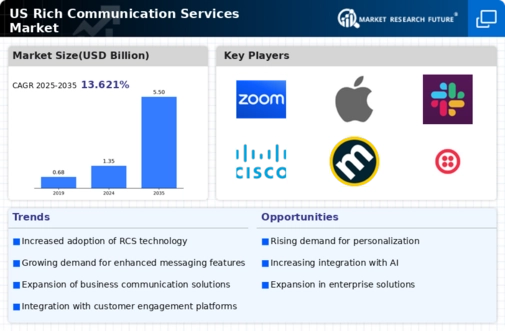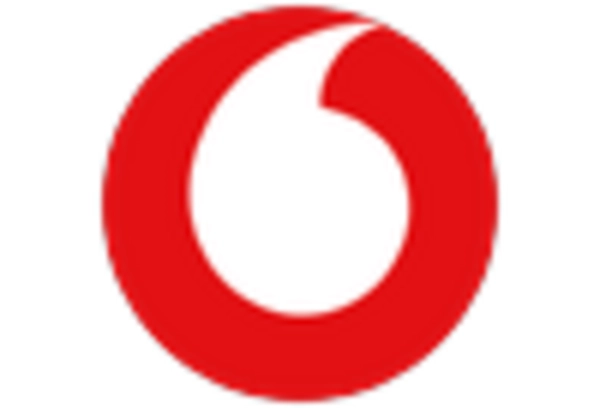Shift Towards Cloud-Based Solutions
The transition to cloud-based solutions is reshaping the rich communication-service market. Businesses are increasingly adopting cloud technologies to enhance scalability, flexibility, and cost-effectiveness in their communication strategies. This shift allows organizations to deploy rich communication services without the need for extensive on-premises infrastructure, thereby reducing operational costs. By 2025, it is anticipated that over 60% of enterprises in the US will utilize cloud-based communication solutions, reflecting a growing preference for remote and hybrid work environments. This trend suggests that the rich communication-service market will continue to evolve, with cloud solutions becoming a cornerstone for delivering innovative communication experiences. As a result, companies that leverage cloud technology may gain a competitive edge in the market.
Regulatory Compliance and Standardization
Regulatory compliance and standardization are increasingly influencing the rich communication-service market. As communication technologies evolve, regulatory bodies are establishing guidelines to ensure data privacy and security. Companies operating in this market must navigate a complex landscape of regulations, which can vary significantly across states. Compliance with these regulations is essential for maintaining consumer trust and avoiding potential legal repercussions. In 2025, it is expected that compliance-related expenditures in the rich communication-service market will account for approximately 10% of total operational costs for major players. This focus on regulatory adherence not only impacts operational strategies but also drives innovation as companies seek to develop solutions that meet stringent compliance requirements while enhancing user experience.
Rising Popularity of Multimedia Messaging
The rising popularity of multimedia messaging is a significant driver for the rich communication-service market. Consumers are increasingly favoring platforms that allow for the sharing of rich media content, such as images, videos, and audio messages, over traditional text-based communication. This trend is particularly pronounced among younger demographics, who prioritize visually engaging content. As of 2025, it is projected that multimedia messaging will account for over 70% of all communication traffic in the US, highlighting a shift in consumer preferences. Companies that adapt to this trend by integrating multimedia capabilities into their rich communication services are likely to capture a larger market share. This evolution suggests that the rich communication-service market will continue to thrive as it aligns with the changing dynamics of consumer communication.
Growing Demand for Enhanced User Experience
the rich communication-service market is seeing a notable surge in demand for enhanced user experiences. Consumers increasingly expect seamless, interactive communication features that go beyond traditional messaging. This shift is driven by the proliferation of smartphones and the growing reliance on digital communication platforms. As of 2025, the market is projected to reach approximately $10 billion in the US, reflecting a compound annual growth rate (CAGR) of around 15% over the next five years. Companies are investing in innovative features such as rich media sharing, group chats, and personalized messaging, which are becoming essential for retaining customer engagement. This trend indicates that businesses must prioritize user-centric design and functionality to remain competitive in the rich communication-service market.
Increased Investment in Communication Infrastructure
Investment in communication infrastructure is a critical driver for the rich communication-service market. As organizations recognize the importance of robust communication systems, they are allocating substantial resources to upgrade their existing infrastructure. This trend is particularly evident in sectors such as healthcare and finance, where secure and efficient communication is paramount. In 2025, it is estimated that spending on communication infrastructure in the US will exceed $50 billion, with a significant portion directed towards enhancing rich communication services. This investment not only improves service delivery but also fosters innovation, enabling companies to offer advanced features that meet evolving consumer demands. Consequently, the rich communication-service market is likely to benefit from this influx of capital and technological advancements.

















Leave a Comment